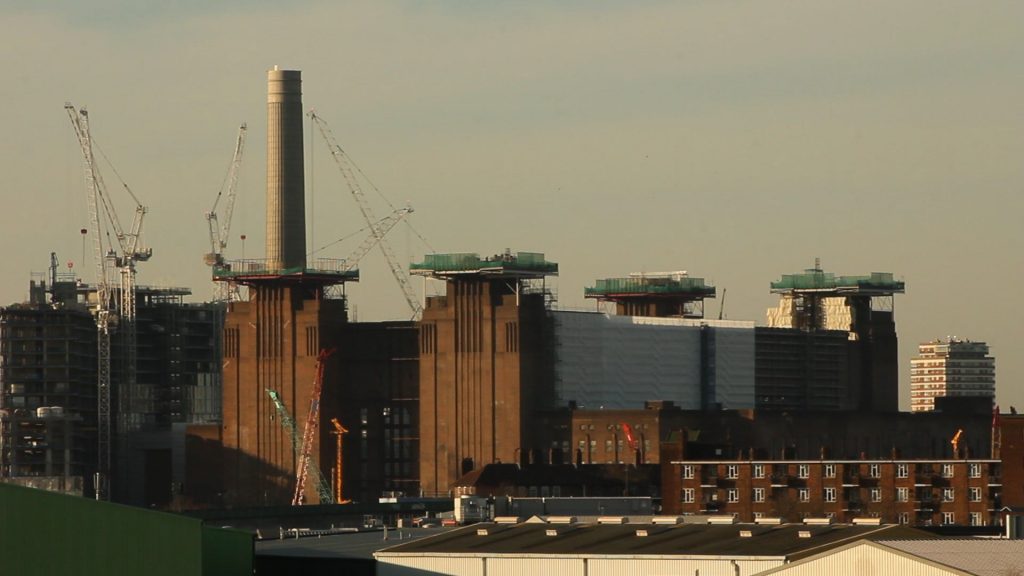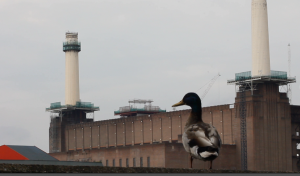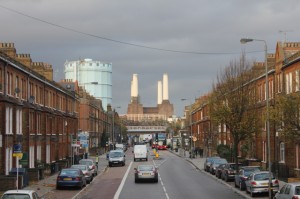According to news emanating from the developers of Battersea Power Station via the Evening Standard– Apple (the suits not the manufacturing) plan to occupy almost half of the beloved art deco building (500,000 square feet) in 2021, relocating 1,400 of its employees from Oxford Circus to Giles Gilbert Scott’s masterpiece.
Despite the expectation of a bright future, the shine has come off the PR coup as the building Apple is moving into, won’t be the Battersea Power Station, but rather a new built Battersea Fake Station. After decades of demolition by stealth, in order to provide daylight to the new office spaces, the East Wall has been demolished. The celebrated expanses of patterned brickwork will be replaced with new Art Deco-Style windows.
The historic brick work East Wall came down just a few weeks ago. It was only after the white plastic scaffold covering was removed that activists and residents realised that the East wall had gone.
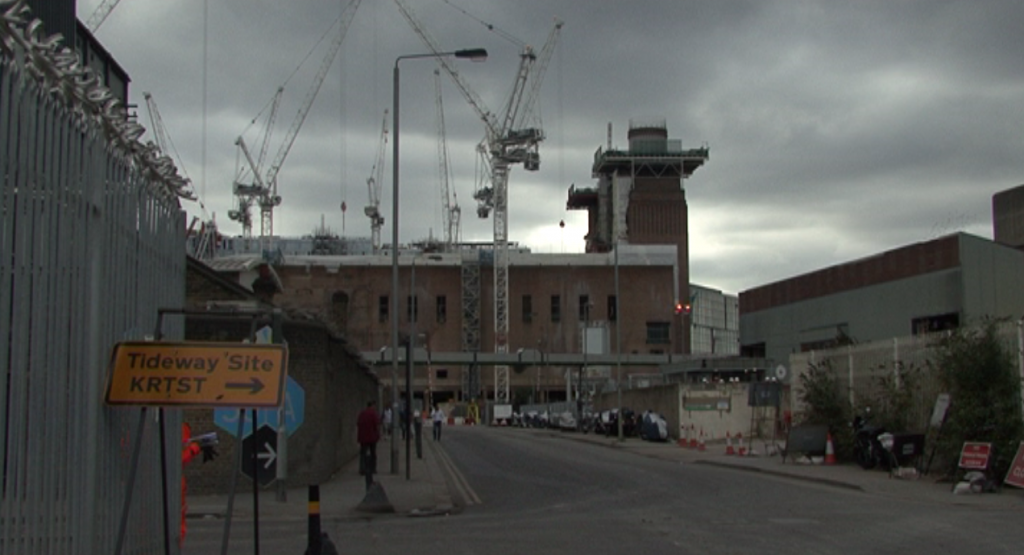
What’s left of the Battersea Power Station – The unexpected demolition of the East Wall.
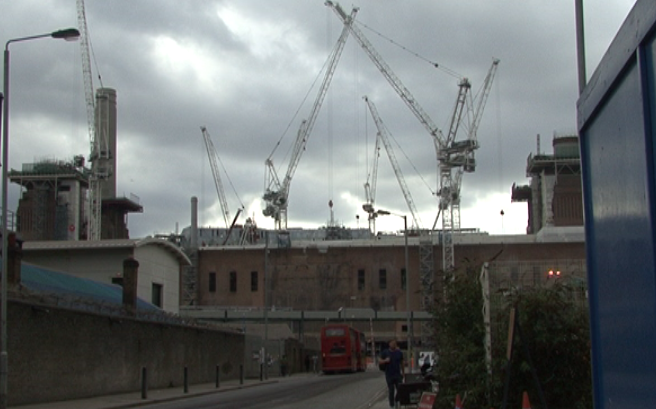
View from the East side of the Power Station without the wall – Demolition in progress … (?!)
Silence in the news left everyone unaware of this latest act of heritage vandalism. Why this lack of information? And what’s the reason behind this decision to demolish? Conservation or profit?
In our film ‘Battersea Power Station: Selling an Icon’, Nigel Barker, Planning and Conservation Director for London at Historic England (formerly English Heritage), described the principle of putting glazing into the East Wall as “quite challenging”.
He added: “One of the key characteristics of the power station was large blank areas of patterned brickwork.”… “If you are going to use that building, if it is going to have a new future then you are going to have to get new light in there.”…”So the decision was taken. Providing (that) the glazing is done in a way that respects and responds to the original design, then we can see it happening.”
Battersea Power Station Development Company got planning permission to put windows in the wall. But what Spectacle and the residents did not know is that they had to knock down the whole wall to realise this plan. Did Historic England know? If so, how does it fit in with their principles of conservation?
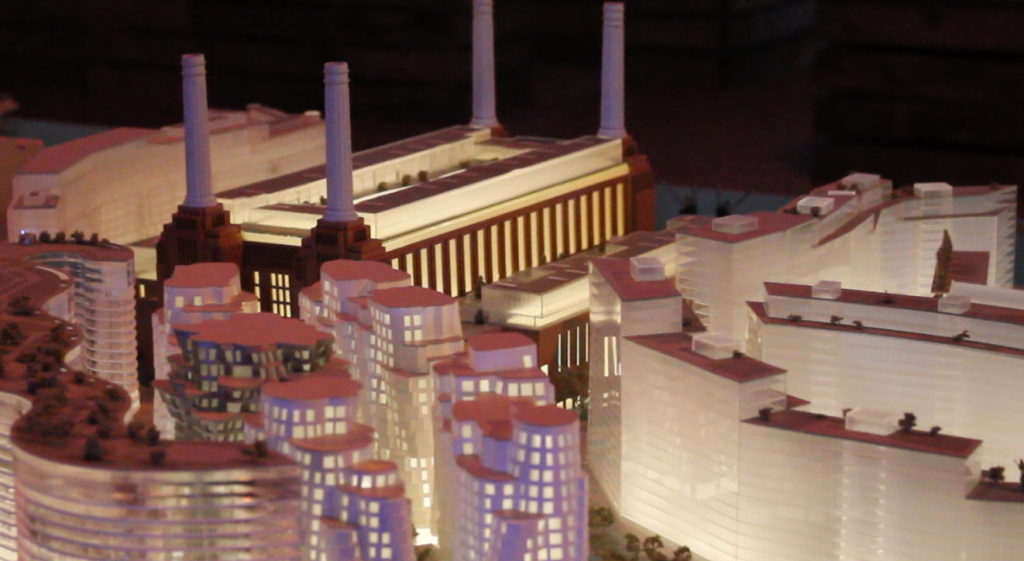
Plastic model of the Power Station redevelopment plan.
Brian Barnes, founding member of the Battersea Power Station Community Group that has fought for the protection of the site since the 1980s, said that everything has been done “behind closed doors” without any consultation. He reminds us that behind the development planning application there are over 600 documents and many subsequent “variations” which makes it hard to grasp what exactly is going on.
The lack of clarity and the broken promises leave residents and fans of the Art Deco masterpiece with many unanswered questions about the future of Battersea Power Station- the biggest brick building in Europe.
Rob Tincknell, CEO of the Battersea Power Station Development Company, told The Guardian: “to fill the power station with shops, offices, luxury apartments and £30m-plus penthouses, and surround it with yet more apartment blocks [… is] paying for this [restoration]. You don’t just regenerate this out of thin air.” But this is not restoration: it is desecration.
It started with John Broome in the 1980s who demolished the West Wall and took off the roof. This three decades long process of demolition by stealth of the heritage site has been allowed by Wandsworth Council.
As we can see, the West Wall has never been rebuilt. Apparently the plan is to create a glass wall so that the luxury ‘ghost’ flats can have the daylight coming through. But the questions are – Who is going to profit and at what cost to us all and to the future generations? Why have the agencies responsible for the protection of our heritage connived in this greedy exploitation of our cultural assets?

